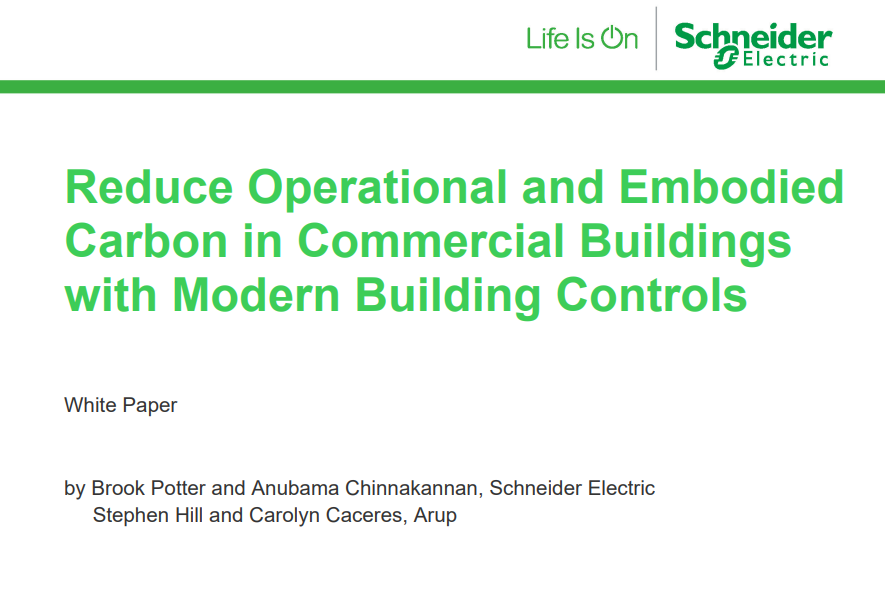Reduce Operational and Embodied Carbon in Commercial Buildings with Modern Building Controls

Arup, a global leader in sustainable engineering services, partnered with Schneider Electric on a technical research study to quantify how the performance of modern building controls in a Building Management System (BMS) could improve energy and car-bon reduction versus traditional building controls. Both controls solutions were based on Schneider Electric product offerings. This paper provides a synopsis of the broader study and findings showing, that in the scenario explored, modern BMS controls with room-level capabilities offered up to 39 percent of HVAC and lighting energy savings, which equates to approximately 26 percent reduction in whole building Energy Use Intensity (EUI). as well as 23 percent lower embodied carbon than traditional BMS controls.


